by the gentle author
After ten years in the making, on publication day for SHOPFRONTS OF LONDON, In Praise Of Small Neighbourhood Shops, Eleanor Crow writes about the significance and value of the independent shops which have always been integral to the culture of London. Click here to order a signed copy for £14.99
An exhibition of Eleanor’s watercolours opens at Townhouse Spitalfields on 3rd October.
Eleanor will giving an illustrated lecture at Wanstead Tap on Wednesday 9th October, showing her pictures and telling the stories of the shops. Click here for tickets
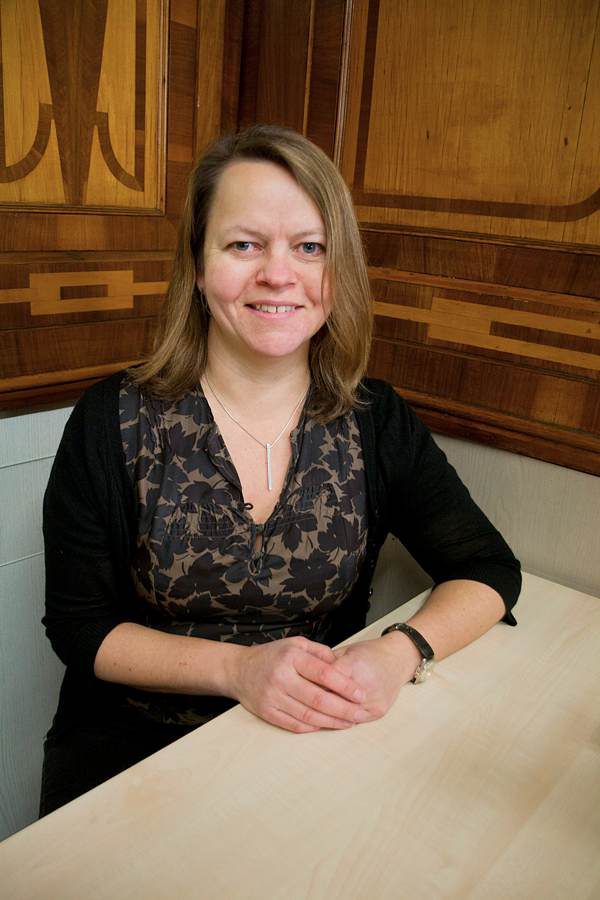
Portrait of Eleanor Crow at E. Pellicci by Colin O’Brien
.
I chose all the shopfronts in my book because I like the look of them. As I pass through London, I always notice the best-looking shop in any street – the one with the particularly attractive frontage, the inventively designed launderette, the small colourful café, the baker with fine fascia lettering and polished tiles, the ironmonger displaying hardware with wit and ingenuity.
Some are long-standing family businesses, others are more recent enterprises. Some have the cachet of historic architectural detailing in brickwork, masonry or glazing, emphasising the distinctive quality of the shop and the place. Some have subtle window display, others are flamboyant. In each case, these shopfronts serve the purpose for which they are intended, drawing the attention of the potential customer.
London is comprised of many communities and, commonly, each one has a terrace of useful shops at the centre. They furnish our wish and whim for any small portable item – a prime cut of beef or an Eccles cake, a garden rake or a fillet of plaice. Or they may simply offer a friendly place to sit and drink a cup of tea after a trip to the market.
Yet they are more than merely useful businesses. Where the shopkeepers have won many loyal customers, these shops deliver a invaluable community service that cannot be equalled by more impersonal forms of shopping. A diverse collection of small shops lends distinction to any location, conjuring the street life which manifests the identity of the place, both serving a human purpose and revealing that the residents care about their neighbourhood.
Perhaps unsurprisingly, public affection for small shops – particularly those that have survived for a great many years – is partly because we feel these shops belong to us. They are landmarks on our daily journeys and their presence on the street offers a visual and emotional anchor in an ever-changing cityscape. They are familiar points of reference in a mutable world.
Working on my paintings, I learnt about shopkeeping and grew curious of the circumstances that might cause a shop to flourish or die. To open a small shop is a tremendous challenge, requiring a grasp of business and a knowledge of the trade, skill in juggling finances to pay for stock, tax, rents and rates, dexterity in managing supply chains, parking restrictions, customer demands and effective stock management. Numerous factors may shape the fortunes of the small shopkeeper. Some are personal and some are environmental – customer demographics, economic fluctuations, urban planning and government policy on rent and rates all play their part.
When a small shop closes, any of these elements may have contributed, but equally, the shopkeeper may simply wish to retire or move on. Everything is subject to change, but when a viable business is brought down by government policy, or escalating costs, this is the outcome of an unfair disadvantage for the small shopkeeper. All neighbourhoods in London reflect the tension between preservation and change, but I hope these small shops will remain as they are, since they are both beautiful and useful, and they cater for all budgets.
Most of all, my book is a celebration of the small neighbourhood shop. Those that are here and now, and some with a long and illustrious past. Whether you live in Paddington or in Plaistow, Mayfair or Mile End, Camberwell or Clerkenwell, it is the small shops that manifest the character of any community.
.
Gardners, Commercial St, Spitalfields
.
Gardners is the longest established family business in Spitalfields. Paul Gardner’s great- grandfather James Gardner began trading here as a scalemaker when the Peabody Building was first built in 1870. Gardners expanded to supply paper bags to greengrocers and countless other small local traders, earning a reputation for London’s cheapest paper bags. Paul has run the shop since he was seventeen without a day off and keeps a collection of family memorabilia behind the counter. This includes the nineteenth century family bible, account books from the eighteen- eighties and his father Roy Gardner’s designs for greengrocers’ labels. As founder of the East End Trades Guild, Paul is universally respected in the East End for his moral leadership, delivering petitions to Downing Street protesting the escalation of rent and business rates which have driven many small shops to the wall.
.
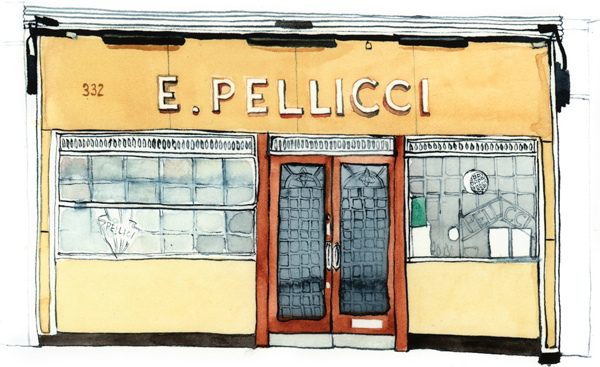
E. Pellicci, Bethnal Green Rd
.
This small friendly café has been owned by the Pellicci family since 1900. With its appealing façade of chrome-lined primrose Vitrolite panels, three-dimensional typography and fine decorative detailing, it is a testament to the enduring qualities of thoughtful shop design. The interior features art deco marquetry by cabinet maker Achille Cappoci from 1946, and the premises are Grade II listed. Most importantly, the business thrives because the Pellicci family know how to keep their customers happy – whether diehard locals, passing celebrities or tourists on a pilgrimage – with their winning combination of wholesome food, exemplary service and entertaining banter.
.
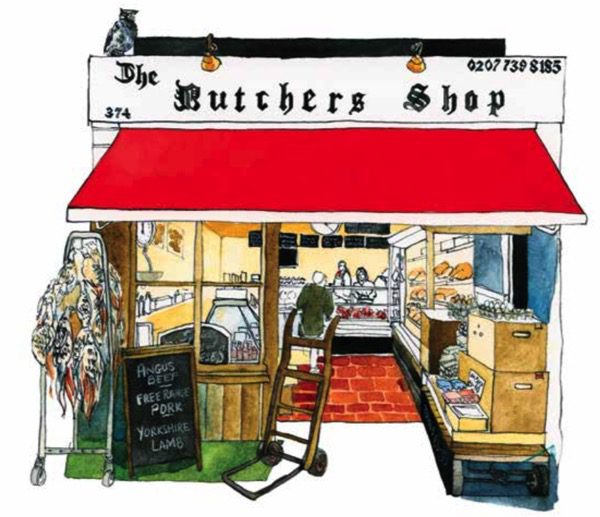
The Butchers Shop, Bethnal Green Rd
.
When Peter Sargent took over his shop in 1983, there were eight butchers in Bethnal Green but now he is the last one standing. It seemed like Peter might go the way of the rest, until he achieved tabloid fame by placing a sign across the road in front of his shop. Directed at those on their way to the supermarket, it said ‘Have a look in butcher’s opposite before you go in Tesco.’ The supermarket threatened legal action, until it was revealed that Tesco had been selling horsemeat and Peter left a bale of hay outside.
.
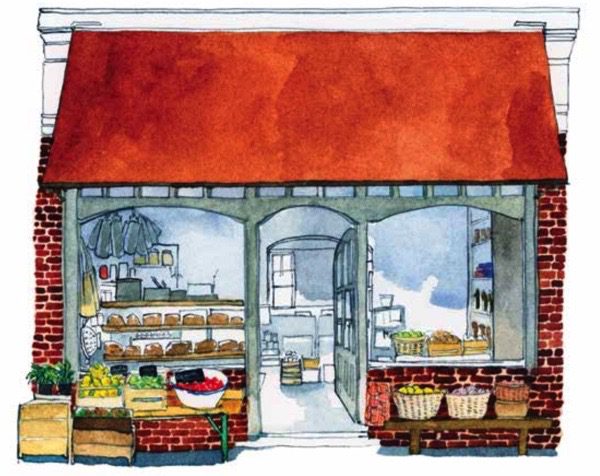
Leila’s Shop, Calvert Ave, Shoreditch
.
This greengrocer in Calvert Ave was opened by Phoebe & Alf Raymond in 1900 in the newly built Boundary Estate – Britain’s first council estate – and was run by the family until 1966. In 2002, Leila McAlister re-opened it as a greengrocer, stocking seasonal fruit and vegetables from independent and small growers, alongside fresh bread, cheese and dry goods. Beneath the wide brown canopy at the front, you can rely upon discovering the East End’s most beautiful display of produce and this ever-changing stock forms the basis of the menu for Leila’s Cafe next door.
.
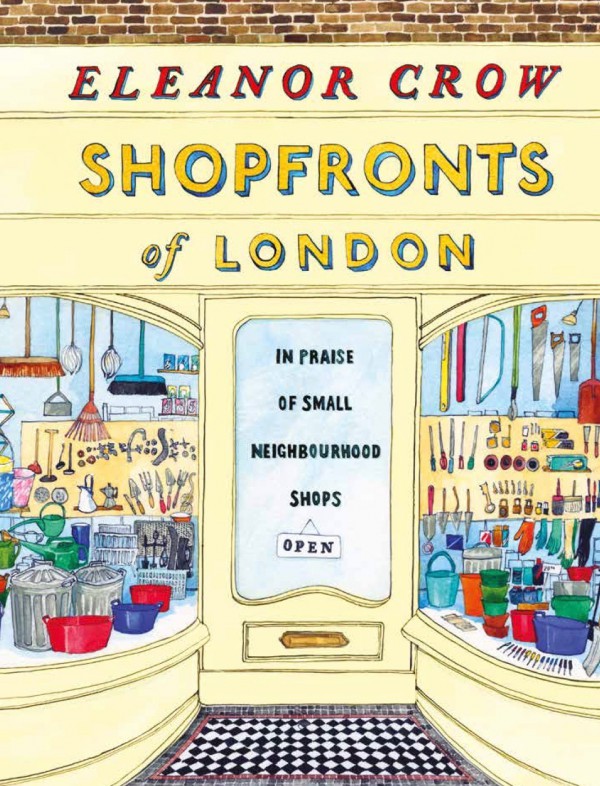
CLICK HERE TO ORDER A SIGNED COPY FOR £14.99
At a time of momentous change in the high street, Eleanor’s witty and fascinating personal survey champions the enduring culture of Britain’s small neighbourhood shops.
As our high streets decline into generic monotony, we cherish the independent shops and family businesses that enrich our city with their characterful frontages and distinctive typography.
Eleanor’s collection includes more than hundred of her watercolours of the capital’s bakers, cafés, butchers, fishmongers, greengrocers, chemists, launderettes, hardware stores, eel & pie shops, bookshops and stationers, accompanied by the stories of the shops, their history and their shopkeepers.